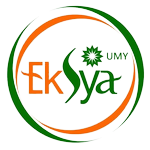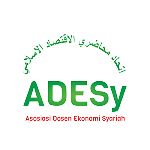A Case Study of Islamic Financial Institutions of Pakistan: Challenges & Growth
DOI:
https://doi.org/10.18196/jiebr.v1i2.20Keywords:
Economic Development; Islamic Banking; Pakistan Financial Institutions; PakistanAbstract
The purpose of this research paper was to find the growth of Islamic financial institutions for the economic development of Pakistan. Also, this study highlighted issues and constraints against the growth of Islamic banking in Pakistan. Islamic banking was based on the current model of products of conventional banking to achieve the general objectives of Islamic economic that was insufficient and based on the fair distribution of economic profits and render the Islamic financing more efficient from their conventional equivalents. The study contained major issues such as lack of treasury and liquidity risk management, regulatory, legal and tax environment, several interpretations of Sharia ruling, lender of last resort facility, lack of Sukuk offered in secondary markets. The study found that in Pakistan, the growth and development of Islamic financial institutions were very low compared to other Muslims and non-Muslim countries need to improve the performance of the Islamic banks' mode, and it is not too late to plan on those constraint strategies and implantation to avoid those constraints. This study will facilitate privileged management to lay down policies so that the Islamic banking operations develop low-income countries such as Pakistan.
References
Alamsyah, D. (17 November,2011). Strengthening Financial Safety Nets in the Islamic Banking. FOURTH ISLAMIC FINANCIAL STABILITY FORUM StrengthenFOURTH ISLAMIC FINANCIAL STABILITY FORUM in the Islamic Financial Services Industry Kuala Lumpur, Malaysia .
Alfred Kammer, M. N. (April,2015). Islamic Finance: Opportunities, Challenges, and Policy Options . Islamic Finance .
Al-Maraj. (2014). Speech at the IMF Middle East and Central Asia Department Governors’ Discussion on Islamic Finance. IMF/World Bank Annual Meetings, October 9, 2014.
Anwar, M. (1992). Islamic banking in Iran and Pakistan: A comparative study,. The Pakistan Development Review, 31(4), 1089-1097. , 31 (4), 1089-1097.
Arena, M. (2008). Bank failures and bank fundamentals: A comparative analysis of Latin America and East Asia during the nineties using bank-level data. . Journal of Banking & Finance, 32(2), 299-310.
Ariss, R. T. (2007). “Challenges in Implementing Capital Adequacy Guidelines to Islamic Banks,†. Journal of banking regulation, , 9 (1), 46-59.
Askari, H. I. (2014). Fiscal and Monetary Policy in Islam. In Challenges in Economic and Financial Policy Formulation . Palgrave Macmillan, New York. , 109-134.
Askari, H. Z. (2010). Askari, H., Z. Iqbal, and A. Mirakhor. 2010. Globalization and Islamic Finance: Convergence, Prospects and Challenges. Singapore: Willey Finance
Aziz, Z. (October 9,2014). Strengthening Financial Stability and Growth Dimension of Islamic Finance,. Discussion on Islamic Finance, IMF/World Bank Annual Meetings
Dusuki AWD, S. E. (2009). Islamic hedging: Rationale, necessity and challenges. . Islamic Economics and Finance (pp. 533-552). Prosiding International Seminar on Muamalat, Islamic Economics and Finance 2009 (SMEKI ‘09).
Ernst and Young, .. (2014). The World Islamic Banking Competitiveness Report, 2013–14, The Transition Begins. The World Islamic Banking Competitiveness Report
Hartlage, A. (2012). The Basel III Liquidity Coverage Ratio and Financial Stability . Michigan Law Review, , 111 (3).
Hurcan, Y. M. (2015). “Taxation and Public Financial Management Implications of Sukuk Instruments". IMF Working Paper (forthcoming), International Monetary Fund, Washington, DC.
IFSB, I. a. (2010). Islamic Finance and Global Finance Stability. Islamic Financial Services Board, Islamic Development Bank, and Islamic Research and Training Institute (IFSB, IsDB, and IRTI).
Iqbal Z, M. A. (2007). An Introduction to Islamic Finance: Theory and Practice. John Wiley & Sons (Asia), Singapore. Prospectus (2009). 238.
Iqbal Z, M. A. (2009). An Introduction to Islamic Finance: Theory and Practice. . John Wiley & Sons (Asia), Singapore. Prospectus (2009). 70.
Llewellyn, D. (1999). The Economic Rationale for Financial Regulation, . Occasional Paper Series, Financial Services Authority, London.
Mirza and Halabi, A. (2003). Islamic Banking in Australia: Challenges and Opportunities. Journal of Muslim Minority Affairs , 23 (2), 347-359.
Ruozi R & Ferrari p. (2013). Liquidity risk management in banks: economic and regulatory issues. In Liquidity Risk Management in Banks . Springer, Berlin, Heidelberg. , 1-54.
sbp.org. (n.d.). http://www.sbp.org.pk/ibd/annual bulletin asp#2009-13. Retrieved from http://www.sbp.org.pk/ibd/annual bulletin asp#2009-13.
Shabsigh, G. (September 25, 2011). “Developing the Government Sukuk Market,†. World Bank Seminar on the Role of Sukuk Development, World Bank, Washington, DC.
Sheikh, A. (2001). Islamic Banking: A Brief Review and introduction to practiced Islamic Banking and Finance . The Arab Review .
Shibani & De Fuentes. (2017). The differences and the similarities between corporate governance principles in Islamic banks and Conventional banks. Research in International Business & Finance , 42.
shoaib, M. (28 July,2015). The Paradox of Islamic Banking of Pakistan. Research Proposal, University of Lahore .
Sobol, I. (2012). Concept of Profit and Loss Sharing in Islamic Finance, in:Regional Management. Theory, Practice and Development, Hittmar S. (ed.), Faculty of Management Science and Informatics, University of Zilina,Zilina.
Standard, P. (2010). Islamic Finance Outlook. The McGraw Hill Companies. Standard, Poor’s, The McGraw Hill Companies.
Swartz, N. P. (20 February,2012). Risk management in Islamic banking . african Journal of Business management .
Technical note, .. (2008). TECHNICAL NOTE ON Issues in Strengthening Liquidity Management of Institutions Offering Islamic Financial services: The Development of Islamic Money Market. ISLAMIC FINANCIAL SERVICES BOARD.
Van Greuning H, Z. I. (2008). Risk Analysis for Islamic Banks. The World Bank: Washingtom, D.C.. , 32.
Van Greuning H, Z. I. (2008). Risk Analysis for Islamic Banks. The World Bank: Washingtom, D.C. , 66 to 67.
Van Greuning H, Z. I. (2008). Risk Analysis for Islamic Banks. The World Bank: Washingtom, D.C. 14. African Journal of Business Management , 73.
Downloads
Published
How to Cite
Issue
Section
License
Copyright (c) 2021 Journal of Islamic Economic and Business Research

This work is licensed under a Creative Commons Attribution-NonCommercial 4.0 International License.
Journal of Islamic Economic and Business Research has CC-BY NC or an equivalent license as the optimal license for the publication, distribution, use, and reuse of scholarly work for non-commercial purpose. The non-commercial use of the article will be governed by the Creative Commons Attribution license as currently displayed on Creative Commons Attribution-NonCommercial 4.0 International License
Creative Commons License




